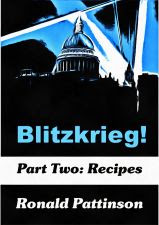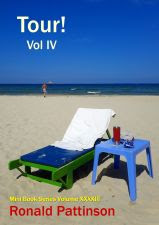This report details some of the illegal practices which the makers of Malzbier got up to. Though it should be borne in mind that the article refers to practices in 1901 in Saxony. Where, at the time, the Reinheisgebot did not apply. It was only a few years later that the law was extended to the whole of Germany.
Beer Substitutes in Dresden.
In a report on the work of the Municipal Chemical Station of Dresden for the year 1901 Beythien states that the attention bestowed in the previous year on the various draught beers sold in Dresden having shown the existence of a satisfactory state of things in this connection, dispensed with the necessity of constant examination on the part of the station. On the other hand, the investigation of several kinds of sweetened malt extracts led to some curious revelations. In one case of a so-called wheat malt extract, chiefly consisting of sugar colouring, and used in the preparation of “malt beer,” the maker and 25 vendors of the bottled product were prosecuted for adulterating single beer, or diluted Kulmbacher beer, with saccharin. Another “sweet malt-beer” was found on analysis to contain 1.52 per cent. of alcohol and 5.64 per cent. of extract, and to consist merely of single beer qualified with sugar. It is stated that quite two dozen varieties of a similar nature are still being sold in the city. Another product of like character (“Methon”), and consisting of sugar solution, impregnated with carbonic acid and slightly scented, has been largely advertised as a “non-alcoholic beverage"; and the same claim has been advanced in connection with a “champagne beer" prepared by diluting and carbonising an essence containing 7.78 per cent, of alcohol and 15.8 per cent. of extract. The extract was found to consist chiefly of sugar colouring, the foam being produced by a substance believed to be identical with saponin.
The Brewers' Journal vol. 38 1902, October 15th 1902, page 626.
These Malzbiers were supposed to be non-alcoholic, like the malt drinks that you find in some tropical countries today. And definitely weren't supposed to be watered-down and sweetened beer. Kulmbacher would certainly have needed a lot of watering down as it was usually at least 6.5% ABV.
Why would they be charged with adulteration for the addition of saccharin? Because even before the Reinheitsgebot its use in beer was banned in Germany. Which is ironic, given that the current version of the Reinheitsgebot does allow artificial sweeteners in some classes of low-alcohol beer.











































































6 comments:
The source for this appears to be “Chemisches Untersuchungsamt der Stadt Dresden Jahresbericht für 1901, Erstattet von Direktor Dr. A. Beythien", which unfortunately doesn't seem to be on Google Books. Malzbier doesn’t have to be non-alcoholic (although obviously there is an issue if it is advertised as such and isn't). There is still one made by Malzmühle in Cologne which reaches 2.4% abv.
Its application across Germany harmed the diversity of beer culture in Germany. Berliner Weisse is practically dead and Cambra had to pour milk stout down the drain because it is a “mythical style of beer”.
Oscar
The first factory in Europe to produce saccharin was in Magdeburg which is a hop skip and a jump from Dresden!
It was the brewers of northern Germany themselves who demanded the application of the Reinheitsgebot, because consumers preferred Bavarian beer. The decline of Berliner Weisse has nothing whatsoever to do with the Reinheitsgebot.
You're absolutly right. The Reinheitsgebot was not a problem for the Berliner Weiße. A lot of other reasons. Mainly it just went out of fashion and beer drinkers prefer lager.
Didn’t know that Rob, but still spirited on by Bavarian beer propaganda.
Oscar
Post a Comment